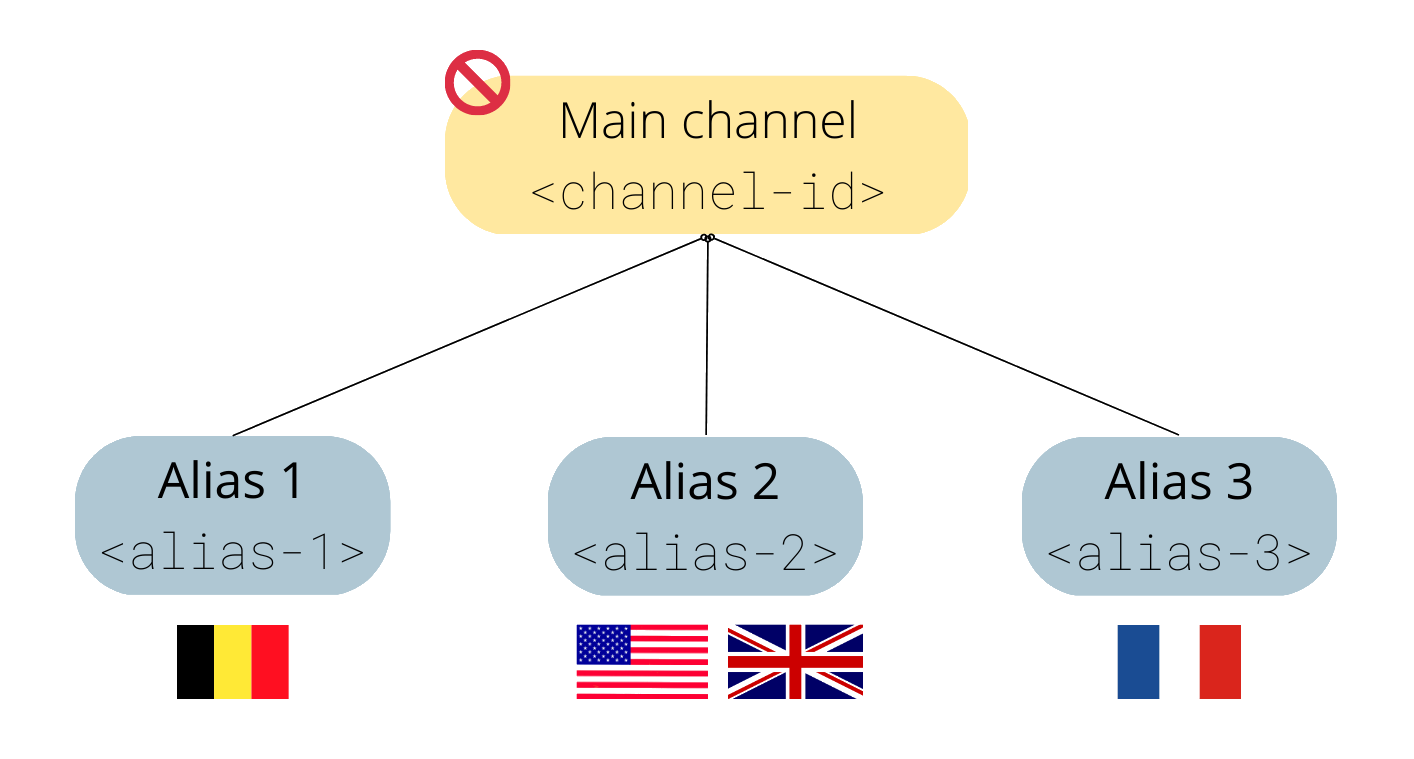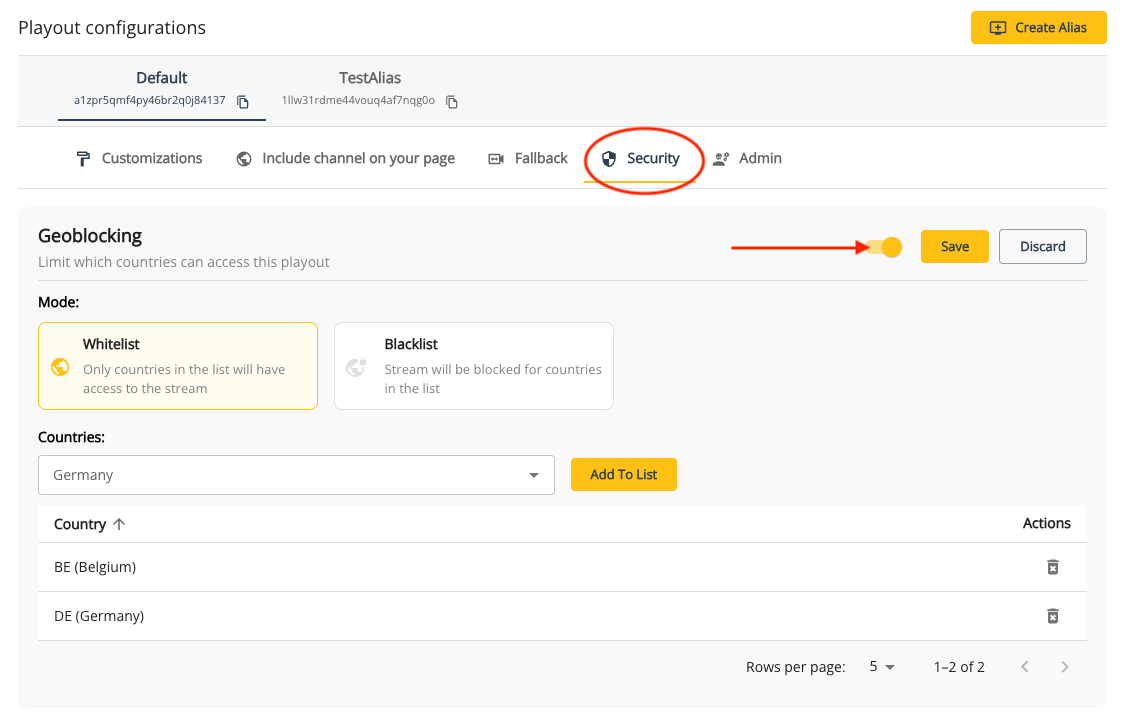Geo-blocking
Geo-blocking refers to the action of restricting ("blacklisting") or allowing ("whitelisting") access to certain content based on the geographical location of the user. Filtering can be allowed or denied by countries as well as IP addresses. Geo-blocking enables content providers to adhere to specific licensing agreements and distribution rights, protect copyrighted material, or service another layer of privacy when working on private content.
Geo-blocking can be configured via the API or the console.
Geo-blocking via the API
Main channel
You can enable geo-blocking on a channel by updating the geoBlocking object within publicationConfig. The mode of geo-blocking can also be configured:
whitelist: Used by default when nomodeis passed. This will make the content only available in the countries that have been specified in thecountriesproperty. Countries not listed in thecountriesproperty will not recieve the stream.blacklist: Blocks the content in the countries that have been specified in thecountriesproperty. All other countries not specified in thecountriesproperty will be able to view the content.
Countries should be passed in ISO 3166-1 alpha-2 codes
For example: If you want to restrict the viewers of your content to only Belgium and Germany, you can pass the following request:
{
"publicationConfig": {
"geoBlocking": {
"enabled": true,
"countries": ["BE", "DE"],
"mode": "whitelist"
}
}
}
If you would like to disable geo-blocking on this channel, you can pass the same request as above, but with:
"enabled": falsecountriescan be omitted as it will be ignored
{
"publicationConfig": {
"geoBlocking": {
"enabled": false,
"mode": "whitelist"
}
}
}
If you would like to make your content available anywhere except Belgium, you can pass the following request:
{
"publicationConfig": {
"geoBlocking": {
"enabled": true,
"countries": ["BE"],
"mode": "blacklist"
}
}
}
Channel alias
Geo-blocking can also be done on a channel alias using the specified channel alias endpoint or via the console.
Geo-blocking on main channel and alias
Combining geo-blocking rules on both the main channel and aliases can allow you to create custom rules on where your content can be viewed in the world.
For example, a stream you have created must adhere to the following rules:
- Customer 1 can only show the stream to Belgian viewers
- Customer 2 can only show the stream to UK and USA viewers
- Customer 3 can only show the stream to French viewers
In this scenario, you can create 3 aliases of your main channel, one for each customer. This allows you to set custom geo-blocking rules for each customer as well as track customer specific analytics.
The main channel's channel-id won't be used, we so can geo-block it completely. This means someone using this channel ID will not be able to see it anywhere in the world.
We will configure the 3 aliases with the following configurations:
- Customer 1 will use channel ID
alias-1where weenablegeo-blocking and restrict the access toBEusingwhitelistin the themodeproperty. - Customer 2 will use channel ID
alias-2where weenablegeo-blocking and restrict the access toUKandUSusingwhitelistin the themodeproperty. - Customer 3 will use channel ID
alias-3where weenablegeo-blocking and restrict the access toFRusingwhitelistin the themodeproperty.

Geo-blocking via the console
Updating geo-blocking settings can also be done via the console. Navigate to your channel's details page and scroll down to the playout configurations panel. Select the your default channel or alias and click on the security tabs. If you don't have an alias, click the Create Alias button on the top right of the panel.
Clicking the toggle button can enable and disable geo-blocking on the specified channel. When enabled, a mode can be selected and countries can be added to the list.
Don't forget to hit "Save" to apply your changes.

Feature compatibility and limitations
- Geo-blocking can be enabled or disabled during the middle of a stream without needing to restart the channel or restart ingests
- IP-blocking for a specified CIDR will not work if geo-blocking is enabled for the country or region where the CIDR originates from